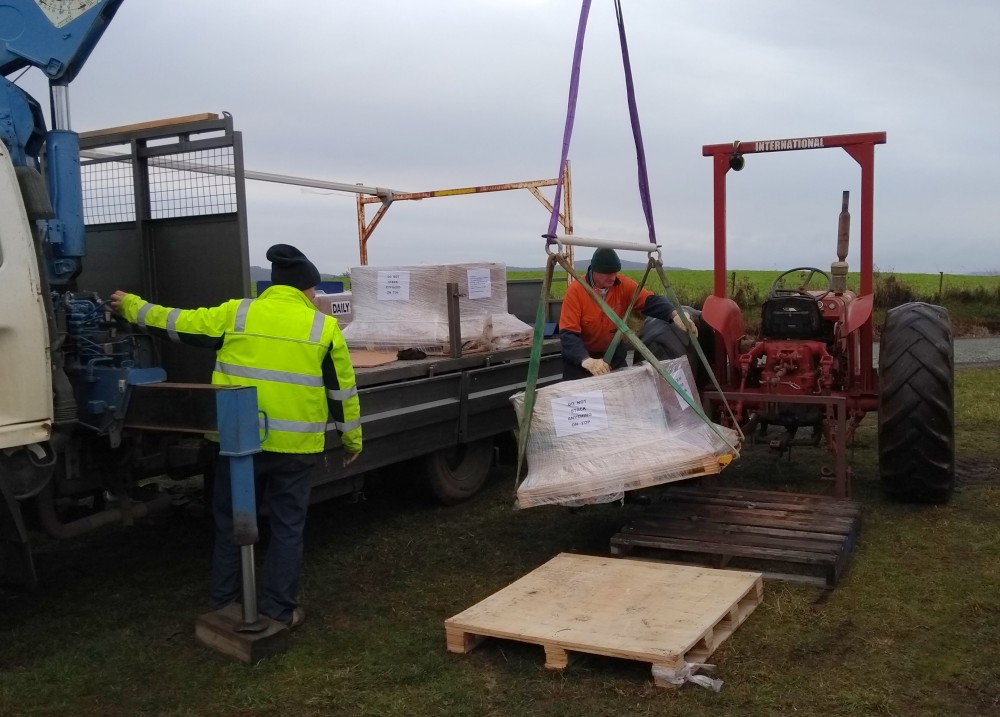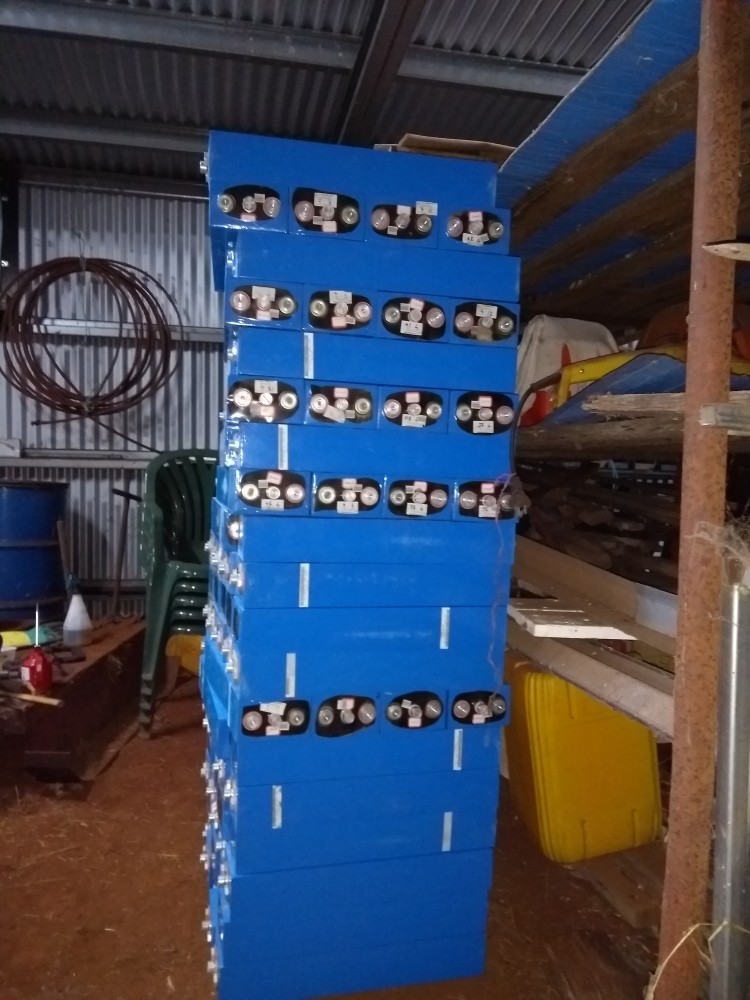Introduction to my home battery
Why do I want a home battery? Well my solar array produces power during the day, and I mainly use power during the night. The electricity company will buy my excess power from me at 9c per kWh. Then in the evening I buy power from them at 30c per kWh. With a battery I could store my excess power during the day, then use it at night.
When I first installed my solar array, I calculated that the money saved by using a 20 kWh battery would save me about $1000 per year. At the time, a 13 kWh battery cost about $13,000 – so a battery was going to cost more than it saved, given that a battery should last about 10 – 15 years. But what if I could get a battery for cheap?!

Back in 2015, Australian vehicle manufacturer AVASS produced some prototype electric buses. They even set a record for the furthest distance on a single charge by an EV – 1018 km! But unfortunately by 2018 they had decided to abandon the project. As part of this abandonment, the company needed to dispose of their EV parts, including prototype buses, motors, chargers and most pertinently, about 2 MWh of LFP cells! Some bright spark in the organisation decided to approach the Australian Electric Vehicle Association. After all, these guys are used to wiring up lithium cells, and there are hundreds of members around the country. Selling them to the AEVA in one hit would be much more tenable than selling them in dribs and drabs via eBay for months.
So AVASS contacted the AEVA’s secretary, Chris Jones. Chris had a good look at the specifications of the cells, and realised that they wouldn’t really suit an average EV. The cells are quite large (460 Ah and 220 Ah), with relatively low discharge currents. This means that to get enough discharge current to use in a vehicle, you need a lot of them. Fine for a bus, but the battery would be too big for a car or ute. Chris’ genius shone through when he realised that these would be perfect for a home battery. He knew that 48 V is a common voltage for lead-acid home batteries, and that LFP chemistry happens to work very well with lead-acid chargers. Making a 48 V LFP battery requires 16 cells. 16 of these cells makes either a 23 kWh battery or an 11 kW battery, depending on if you use the larger or smaller cells. This capacity is ideal for a home storage system, for instance the Tesla Powerwall is 13.5 kWh.
Now 16 LFP cells is only the start of a home storage battery. You also need a charger, inverter, and, crucially, a battery management system. Chris reasoned that AEVA members are among the most experienced DIY people in Australia when it comes to connecting together lithium cells to make a battery. So perhaps they might be interested in purchasing these cells? Were they what!
With 1500 cells on offer, it was decided that AEVA would purchase the whole lot, and offer one battery of 16 cells to each AEVA member for $960. This was the same price whether they were the 460 Ah or 220 Ah cells. Since there were ‘only’ 94 batteries, and 586 members at the time, the offer was divided between the branches. Tasmania, with 17% of the membership, was offered 17 batteries.
Chris sent out an email at 11am on 22/6/18 advising members of the offer (after sending a couple of ‘teaser’ emails previously hinting at a great deal coming up). Now at this stage I’d completed an LFP battery for the Brumby, and I had a good idea how much effort there would be to assemble a home battery. So I decided that I wouldn’t rush into a decision – I’d like a battery, but I’d be getting myself into another big project. I’d sleep on it. In the morning I decided that I would put my name down, and found that all the 23 kWh batteries were already taken! So I put my name down for one of the 11 kWh batteries, and put my wife’s name down for another (we are both AEVA members). It turns out that we did get our 22 kWh battery, at only double the price of a 23 kWh one! I guess I should have been quicker, or (probably more sensibly) slower. In the end, all 94 batteries were sold in less than 24 hours. Many of the recipients fell in to the category of ‘not sure what I’ll do with them, but they were a bargain too good to pass up!’.

Moving cells with the tractor 
Stack of Lithium Cells 
Unpacking cells from pallets
Tasmania’s cells arrived on pallets in July 2018. My property is reasonably close to the freight depot, so I offered to store them here until people were able to collect their share. The tractor could only just lift a pallet, even lithium cells are heavy! People were very keen to collect their cells, so within 24 hours the only ones left were my 32.
Now I had 22 kWh of storage, but no way to fill it, no way to empty it, and not a lot of idea how these things all fit together… See my next post to see how I made a grid connect home storage battery system based on these cells.